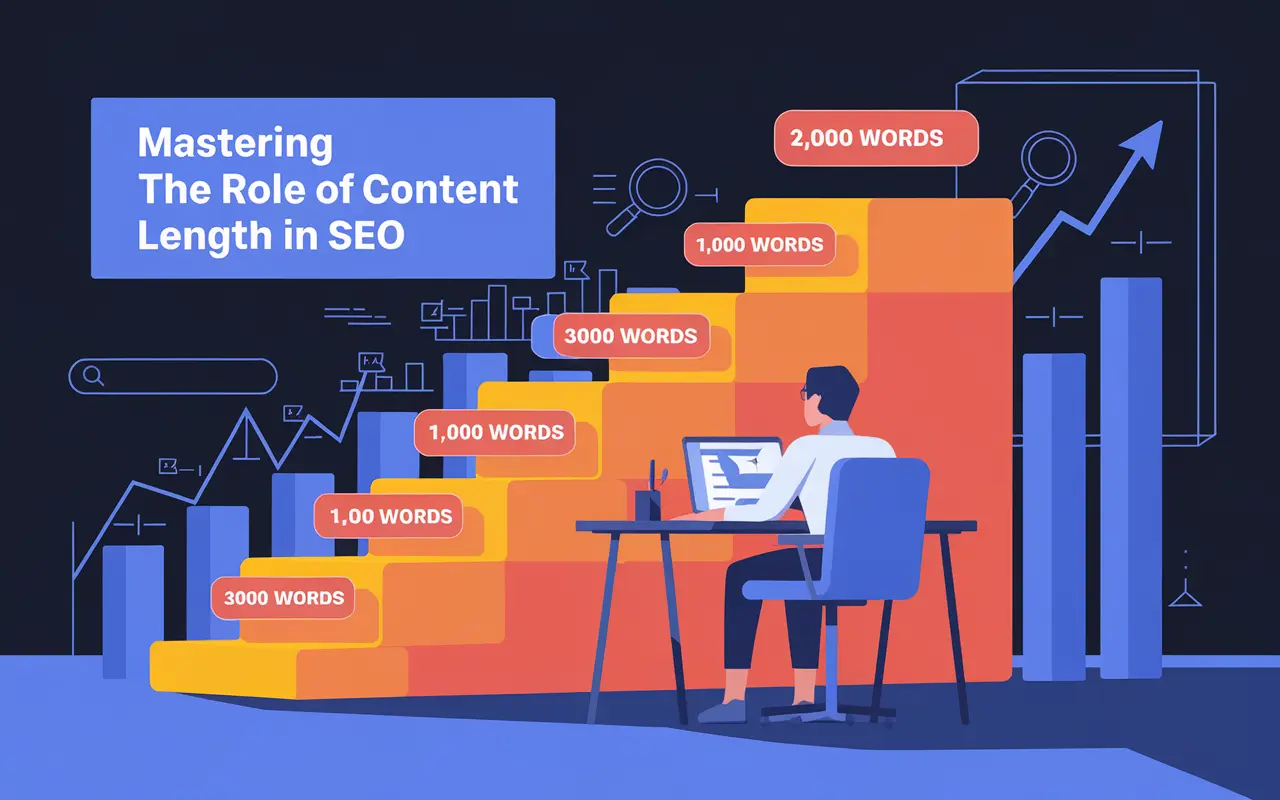Understanding the Role of Content Length in SEO
Content length in SEO refers to the total word count and overall substance of a webpage’s content. While quality always trumps quantity, the length of your content plays a pivotal role when it comes to visibility on search engines. Google’s algorithm evaluates content based not only on relevance but also on comprehensiveness, which often correlates with longer, well-structured content pieces.
A robust content length helps demonstrate topical authority, tackle user intent more completely, and increase the potential for backlinking, social sharing, and ranking for a wider range of keywords. For SEO service providers, understanding and optimizing content length is key to producing high-performing web pages that both users and Google love.
Key Takeaway
Longer, comprehensive content improves SEO by increasing dwell time, reducing bounce rates, and signaling topic authority to search engines, leading to better rankings and user engagement.
Why Content Length Matters in SEO Strategy
Content length plays a foundational role in SEO success. While content quality is the baseline, longer content naturally allows for deeper exploration of topics, answering more user queries in a single visit. This impacts several ranking factors — from time on site to internal linking opportunities.
Increases Topical Authority
Search engines value content that thoroughly covers a topic. A well-researched 2,000-word article is more likely to demonstrate expertise than a 300-word blog post. Topic depth supports Google’s E-E-A-T (Experience, Expertise, Authority, Trustworthiness) guidelines.
Improves User Engagement
Long-form content tends to answer a reader’s queries comprehensively. This increases time spent on page, reduces bounce rate, and encourages users to explore related internal pages — all positive behavioral metrics for SEO.
Ranks for More Keywords
Lengthy content has the potential to naturally include more long-tail and variety keywords, enabling it to rank for broader search intents and higher cumulative traffic.
Best Practices for Optimizing Content Length for SEO
- Focus on Search Intent: Adjust content length based on what the user needs. Some queries need 300 words, others 3,000+ words.
- Benchmark Competitors: Analyze top-ranking pages for a keyword and match or outperform their length with added value.
- Avoid Fluff: Don’t increase word count just for the sake of it. Every section should deliver meaningful insights.
- Use Proper Content Structure: Break content into H2s, H3s, include multimedia, and use short paragraphs to improve readability.
- Combine Length With Quality: Back your arguments with data, examples, internal and external links to enhance credibility and SEO performance.
How Content Length Works in the SEO Process
Google’s Algorithmic Preferences
Google prefers content that’s complete, trustworthy, and structured. Longer content allows crawlers to assess content depth and context more clearly. With features like passage indexing, even segments within long content can rank individually.
User Engagement Signals
Google accesses behavioral data such as time on page and scroll depth. Well-structured long-form content usually secures better engagement metrics, enhancing its ranking potential.
Higher Value Per Page
Longer pages cover multiple subtopics and can rank for several relevant keywords — increasing organic impressions and reducing the need for separate thin content pages.
| Content Length | Average Word Count | SEO Impact | Example Use Case |
|---|---|---|---|
| Short-Form | 300-600 words | Fast to read, but limited SEO potential | Announcements, news briefs |
| Medium-Form | 700-1200 words | Balances topic coverage and readability | Product pages, how-to guides |
| Long-Form | 1500+ words | Ranks higher, attracts backlinks | Ultimate guides, pillar posts |
Case Study: How Content Length Boosted Organic Rankings by 65%
Problem: Low Organic Visibility and High Bounce Rate
A B2B SaaS company struggled with poor search traffic despite creating regular short blog posts (400–600 words). User engagement and rankings were stagnant with no substantial keyword penetration.
Solution: Shift to Long-Form Pillar Content Strategy
The SEO team rewrote key blog posts into detailed 2,000+ word guides, added internal links, included infographics, schema, and aligned all content pieces around buyer intent keywords.
Results: 65% Traffic Growth and Enhanced Metrics
Within 3 months, organic traffic increased by 65%, bounce rate dropped by 22%, and time on page nearly doubled. Several pages entered Google’s top 5 for high-value keywords.
Common Mistakes to Avoid With Content Length
- Overstuffing Content: Adding unnecessary text degrades quality and user trust.
- Ignoring Formatting: Long blocks of unformatted text hurt readability and SEO performance.
- Neglecting Mobile Users: Long content without responsive design fails on mobile devices.
- Missing Intent Match: Writing long posts for queries that require quick answers leads to poor engagement and reduced rankings.
Related Terms
- On-Page SEO: Optimization of content and HTML elements directly on the page to improve ranking.
- SEO Copywriting: Writing content for both users and search engines by integrating keywords effectively.
- Keyword Density: Refers to how often a keyword appears in content relative to total words.
FAQs About the Role of Content Length in SEO
While there’s no fixed number, studies show that pages with 1,500+ words tend to perform better in organic search results. However, tailor content length to user intent.
Not always. While longer content has more ranking potential, it must provide value, match the search intent, and be well-formatted for readability.
Comprehensive content retains readers longer, reduces bounce rates, and increases page views, which are positive engagement signals for SEO.
Yes. Updating older content with added insights, length, and structure can boost its value, rankings, and engagement metrics.
Conclusion
Content length in SEO is about creating thorough, intent-driven, and valuable content that aligns with user needs and search engine expectations. Whether you’re trying to educate, convert, or rank — longer content optimized correctly gives you an edge in today’s search landscape. Start aligning content length with strategy and explore more on our SEO resource hub for actionable insights.






